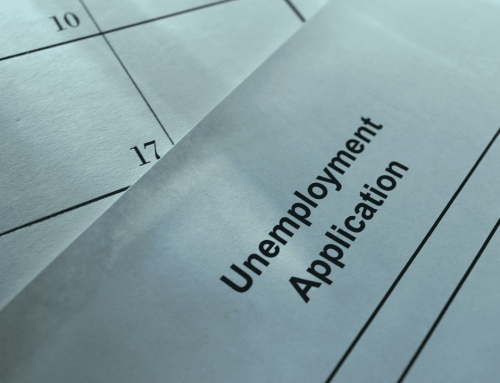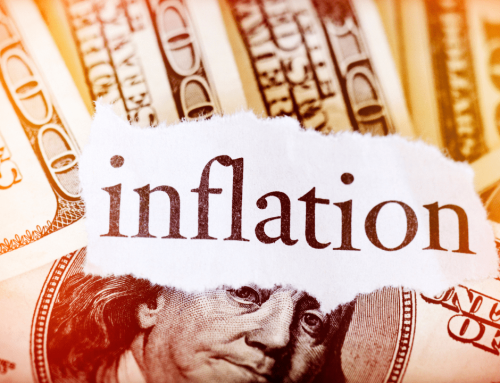This is the third post covering Liberty Street Economics (LSE) recent series on economic inequality in the U.S. workforce, during the early stages of the COVID-19 recession, and the subsequent recovery. In the first two posts we looked at:
- The pandemic’s impact on workers in various wage-earning groups
- The economic and racial differences between those who had to continue working away from home (i.e. commuting), versus those could work from home.
Today, we focus on how the pandemic impacted racial differences in workforce participation, during both the recession and subsequent recovery.
As a reference point, LSE makes the case that recessions tend to have a disproportionate, negative impact on Black Americans. For example, they looked at the Great Recession and found a dramatic increase in the unemployment gap between Black and White workers, before and after the recession. Prior to the Great Recession, the Black/White unemployment gap was 3.5 percent. Coming out of the recession, the same gap stood at 8.5 percent.
As the chart below illustrates, the COVID-19 recession led to another increase in the unemployment gap, going from a 3 percent gap in February to a 5.4 percent gap in August. We also see a dramatic increase in the workforce participation gap between Black and White workers.
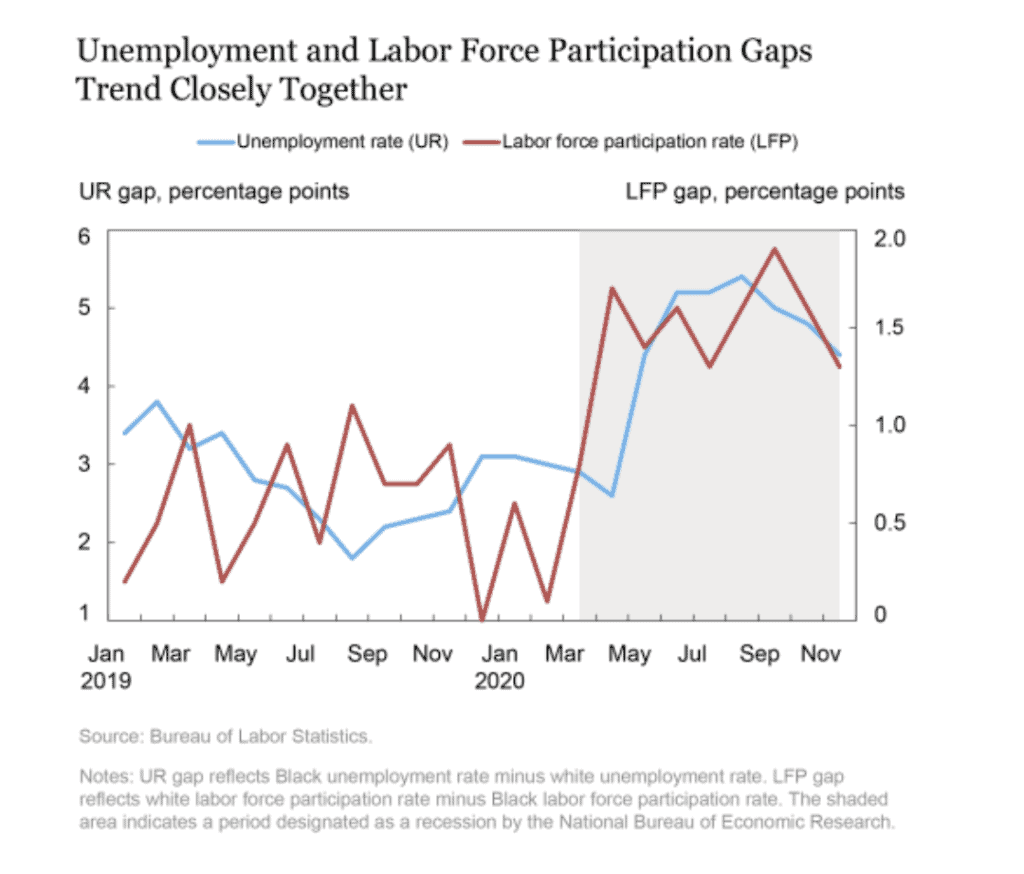
The study also looked at job market participation, in the context of “flow” between employment, unemployment, and not being in the labor force. The chart below looks at how Black and White workers transition between:
- Employment: E
- Temporary Unemployment: TU
- Permanent Unemployment: PU
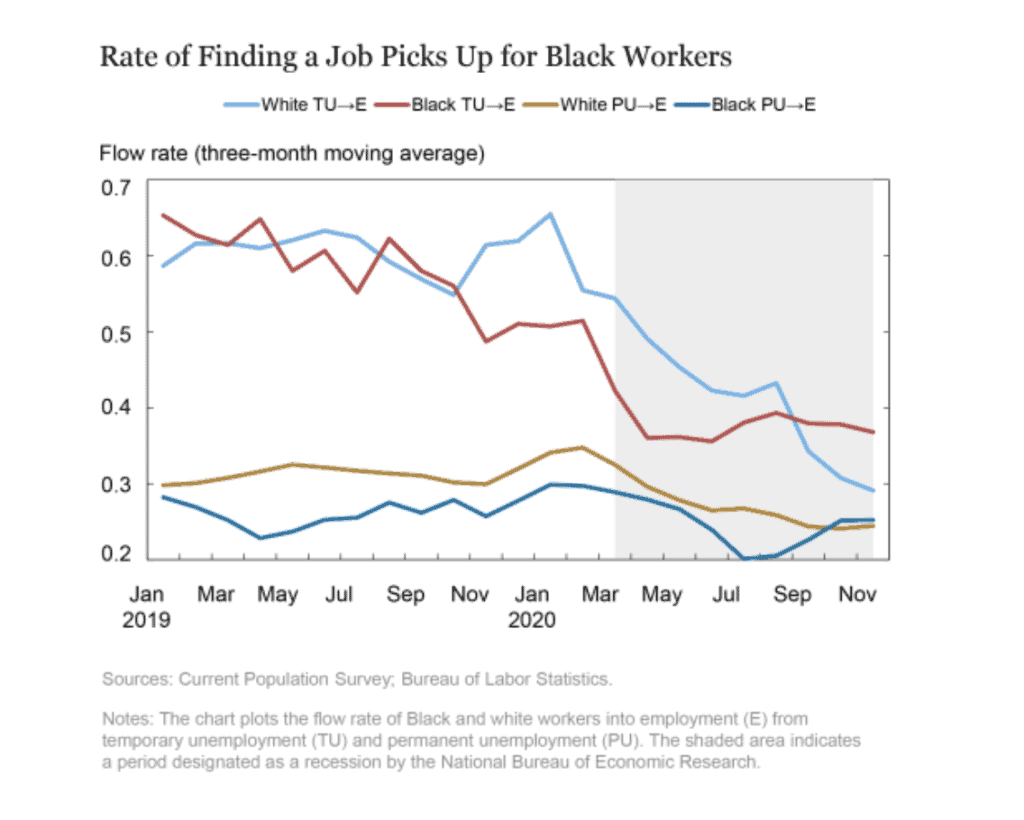
We see several things in the chart above:
- The rate of finding jobs declined for both Black and White workers as we moved through the early stages of the COVID recession.
- Black workers show lower job finding rate flow, both from Temporary and Permanent Unemployment.
- In recent months, the job-finding rate for Blacks has picked up and, in fact, exceeds the rate for White workers. If this rate continues into 2021 we can expect to see the unemployment gap continue to decline.
In addition to the above analysis of job finding rates, LSE looked at job loss patterns between Black and White workers:
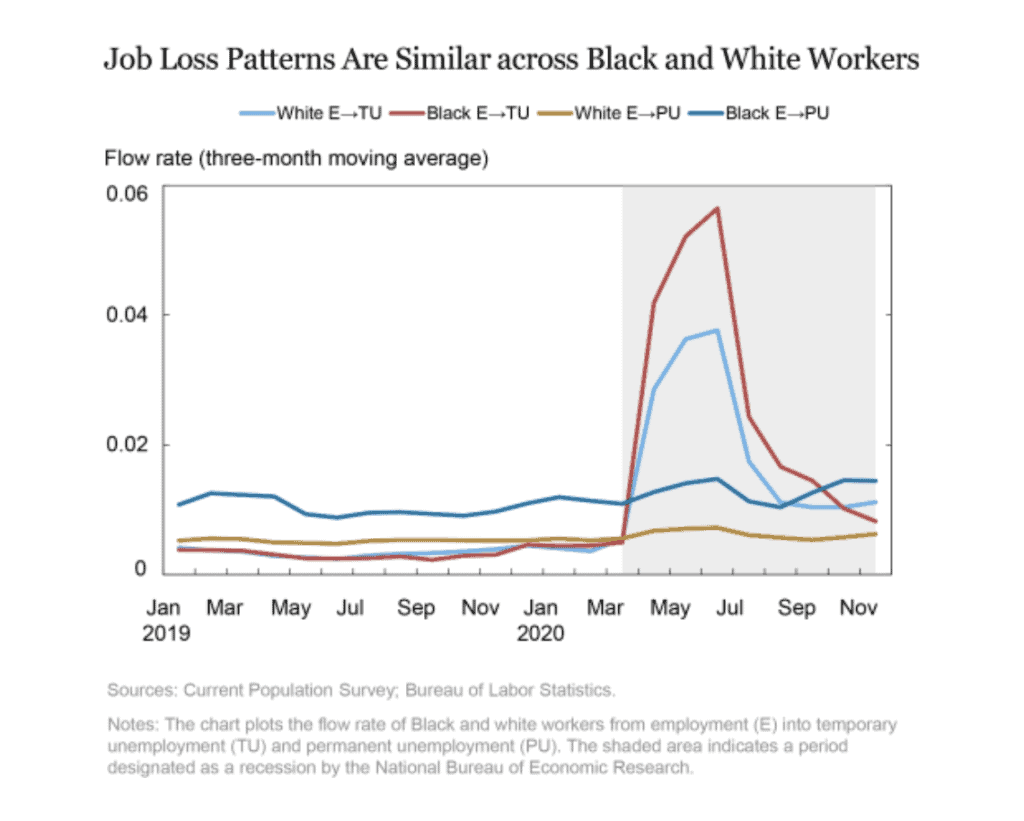
We see several patterns emerge above:
- Both Black and White workers experienced similar job loss trends, with peak job loss coming in June and July.
- While the trends are similar, the rate of both permanent and temporary job loss was significantly higher during the peak months.
- The gap in permanent unemployment remains unchanged throughout the recession and recovery, but narrows with regard to temporary unemployment in recent months.
Finally, the study looked at the rate at which workers exit the labor force, out of unemployment:
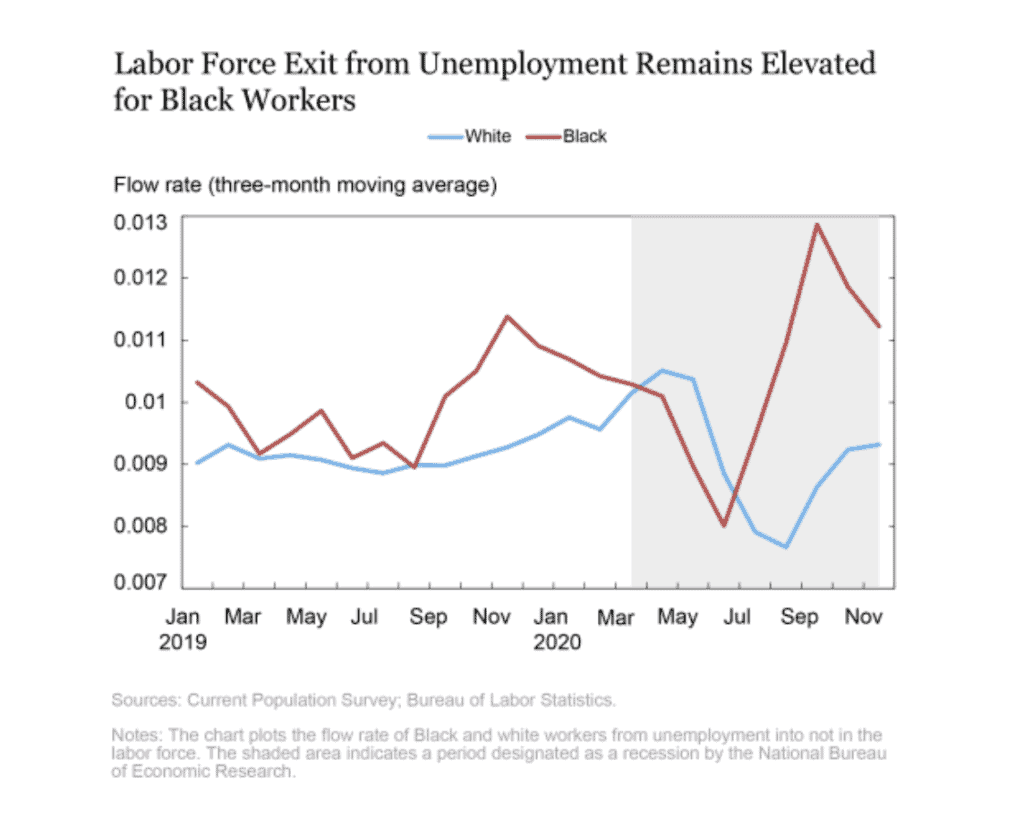
The chart tells us several things:
- In the early months of the recession, both Black and White workers exited the labor force at about the same rate; in fact, the rate was slightly higher for White workers.
- In recent months, Black workers have exited the labor force at dramatically higher rates relative to White workers, suggesting that labor participation by Black will be depressed in the near future.
The recent improvements in both the rate of finding a job and job loss patterns have helped to narrow the Black/White unemployment gap. But the level at which Black workers have exited the labor force in recent month, presages future widening of the Black/White gap. And thus, an uneven labor market recovery.
SOURCE
To learn more about Recovery Decision Science contact:
Kacey Rask : Vice-President, Portfolio Servicing
[email protected] / 513.489.8877, ext. 261
Error: Contact form not found.


